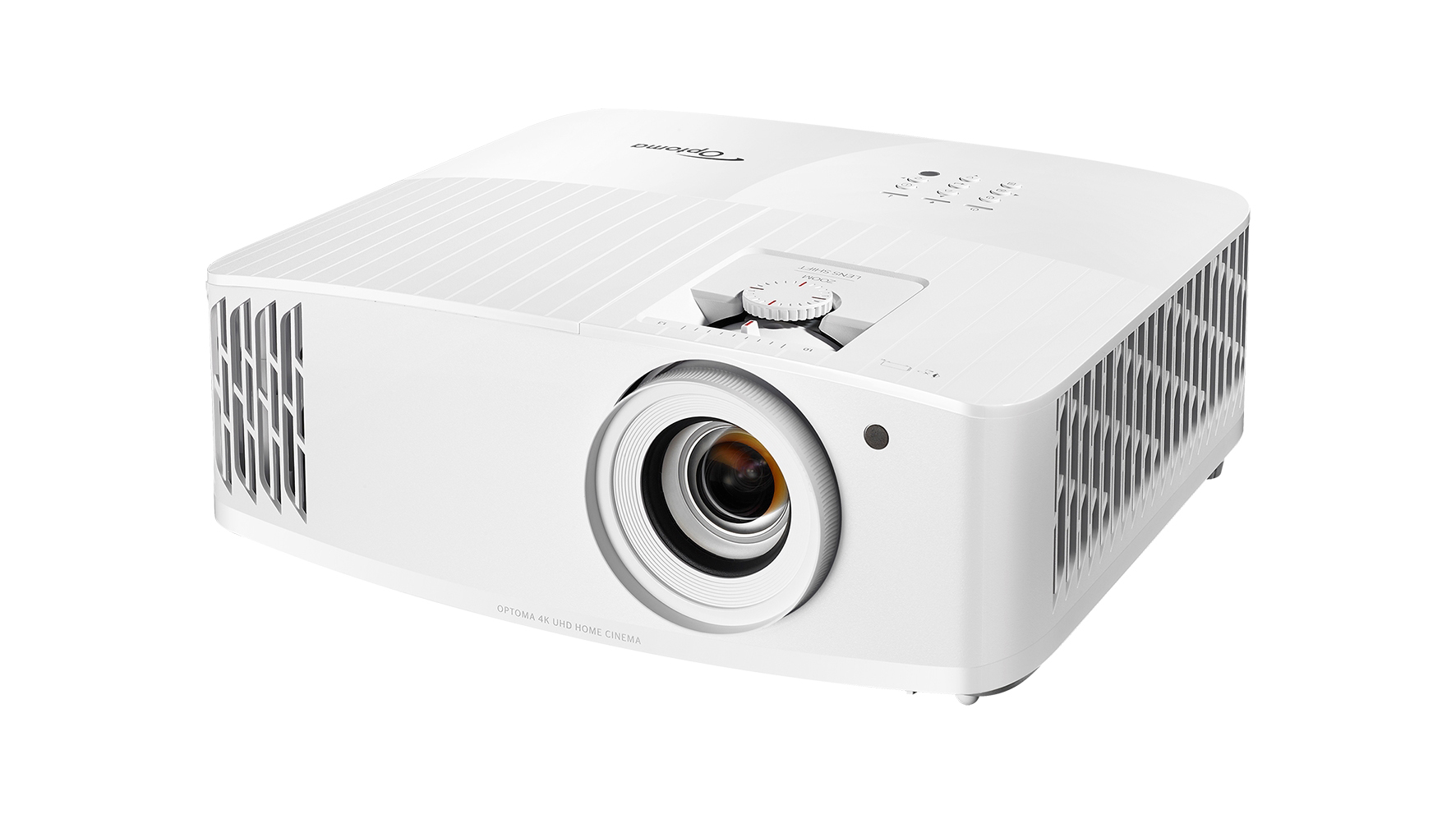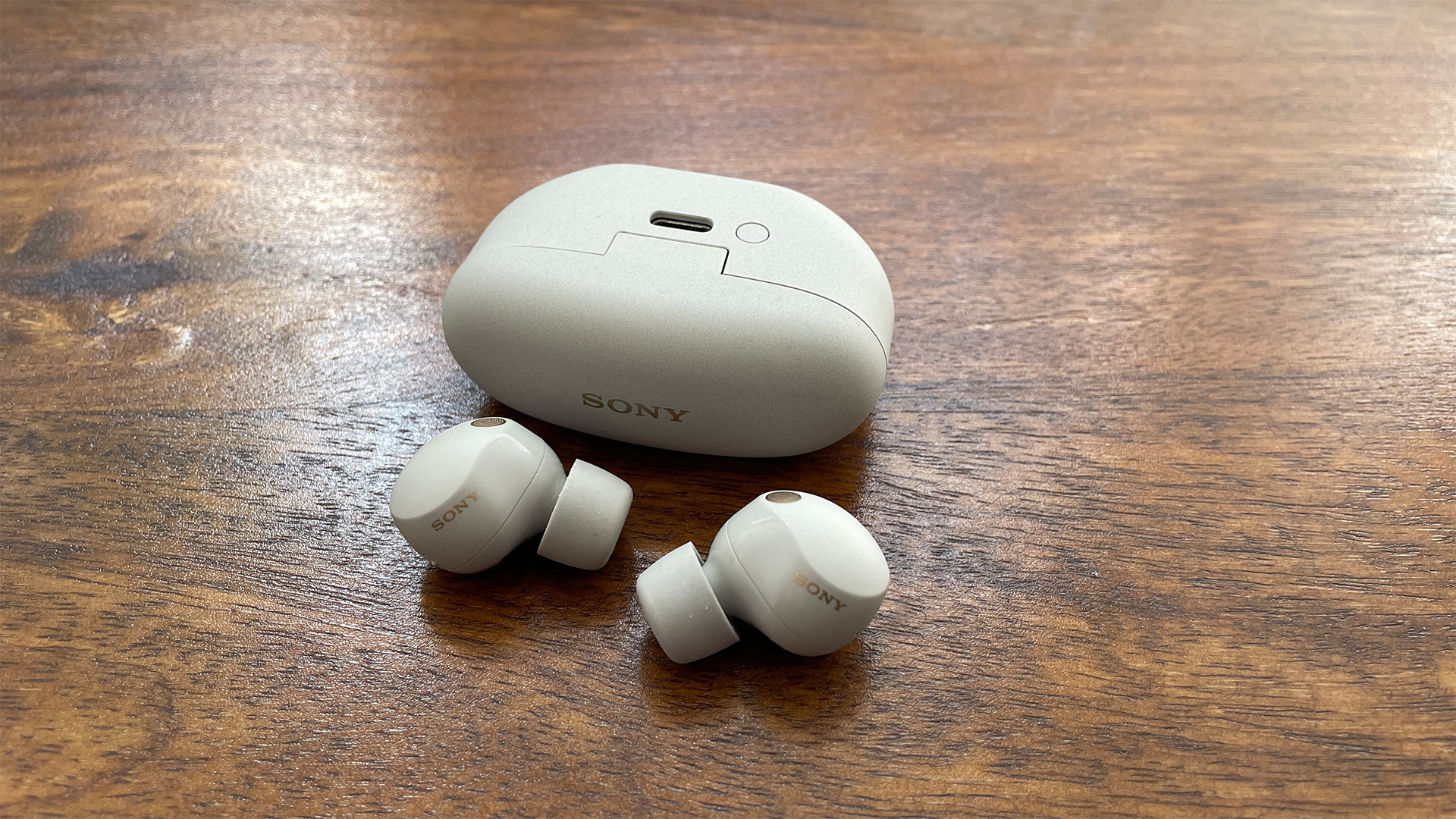What Hi-Fi? Verdict
Great features for gamers, but there are more capable projectors for home movie night
Pros
- +
Excellent black depth
- +
Great gaming feature
- +
Strong, bright picture
Cons
- -
Image is flat
- -
No motion processing
- -
Obvious contrast adjustments
Why you can trust What Hi-Fi?
Whoever coined the phrase ‘comparisons are odious’ can’t have been a What Hi-Fi? reviewer. While we appreciate the sentiment – shouldn’t everything be judged on its own right, after all? – in the case of the Optoma UHD42, it’s hard not to draw comparisons when it is the follow-up to a multi-Award-winning home projector.
As the successor to the UHD40, a former Product of the Year, there is a lot of pressure on the UHD42 to perform, but Optoma doesn’t need to reinvent the wheel here. All we’re looking for is an affordable 4K home projector that’s at least as capable as its predecessor. The trouble is that simply maintaining such high standards isn’t always as straightforward as it seems.
Build

At 3.9kg and 32cm in width, the Optoma UHD42 is fairly easy to accommodate, whether you choose to place it on a shelf or ceiling-mount it. It’s a perfectly decent fit for a dedicated AV suite but feels a lot more focused on gaining a spot in the living room as an all-round entertainment device.
The UHD42 has a pair of speakers powered by 10W of amplification. If you have an external sound system, there’s the option of either a 3.5mm analogue out or an optical if you’d prefer to boost the audio without going down the path of a dedicated home cinema set-up. There are two HDMI ports. The first of these is an HDMI 2.0, rated at 60Hz for 4K and also capable of up to 240Hz frame rates for Full HD content. Optoma claims a 15.7ms input lag, which should pique the interest of gamers. The second socket is a more rudimentary HDMI 1.4.
The other port of significance is a 5V/1.5A USB socket that could be used to power a media streamer plugged into one of the HDMIs. It certainly makes sense, given that the Optoma UHD42 has no wi-fi or smart platform of its own. Bear in mind, though, that some streamers are fussy and will demand power from a wall socket instead.
Features
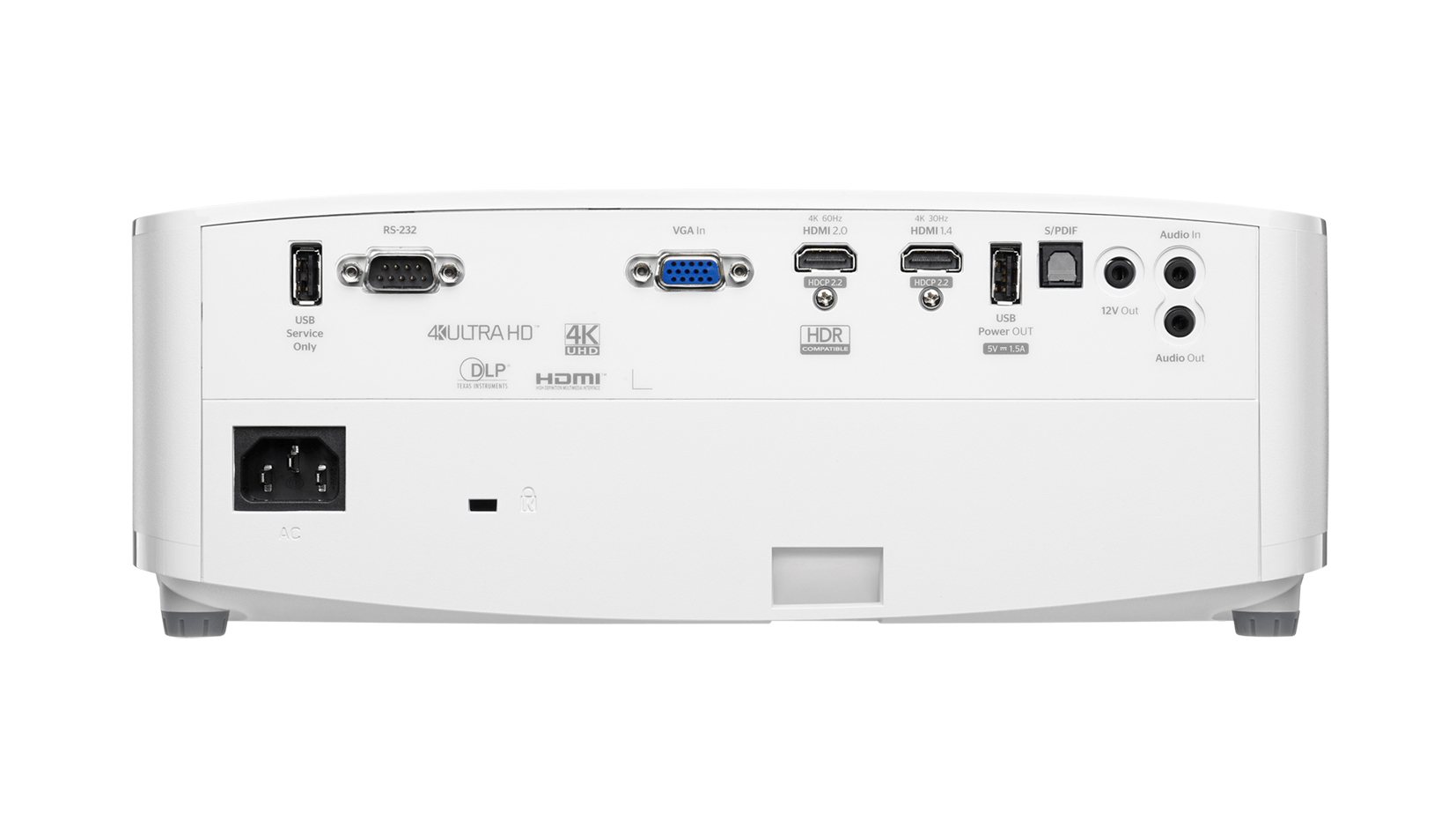
The Optoma UHD42 has a throw ratio of 1.21 to 1.59. That’s the same as its predecessor, but doesn’t offer quite as much flexibility as its closest rival, the Epson EH-TW7000 with its 3LCD chip. In our case, it means moving a heavy AV rack forward by about 50cm to fill our 96-inch projector screen.
There is no horizontal lens shift and only 10 per cent on the vertical to play with, but there is both a keystone correction feature and a digital image shift option in the menus to allow fine-tuning of the picture position. At this price, there’s no lens motorisation – focus and zoom are done by hand on the device.
The latest hi-fi, home cinema and tech news, reviews, buying advice and deals, direct to your inbox.
There are control buttons on the top surface, but you will probably use the remote control more. It’s small and fully featured, though the backlight is a little too bright in a dark room. Meanwhile, the projector’s 3400 lumens rating makes it fairly well suited to a variety of ambient light conditions.
Picture
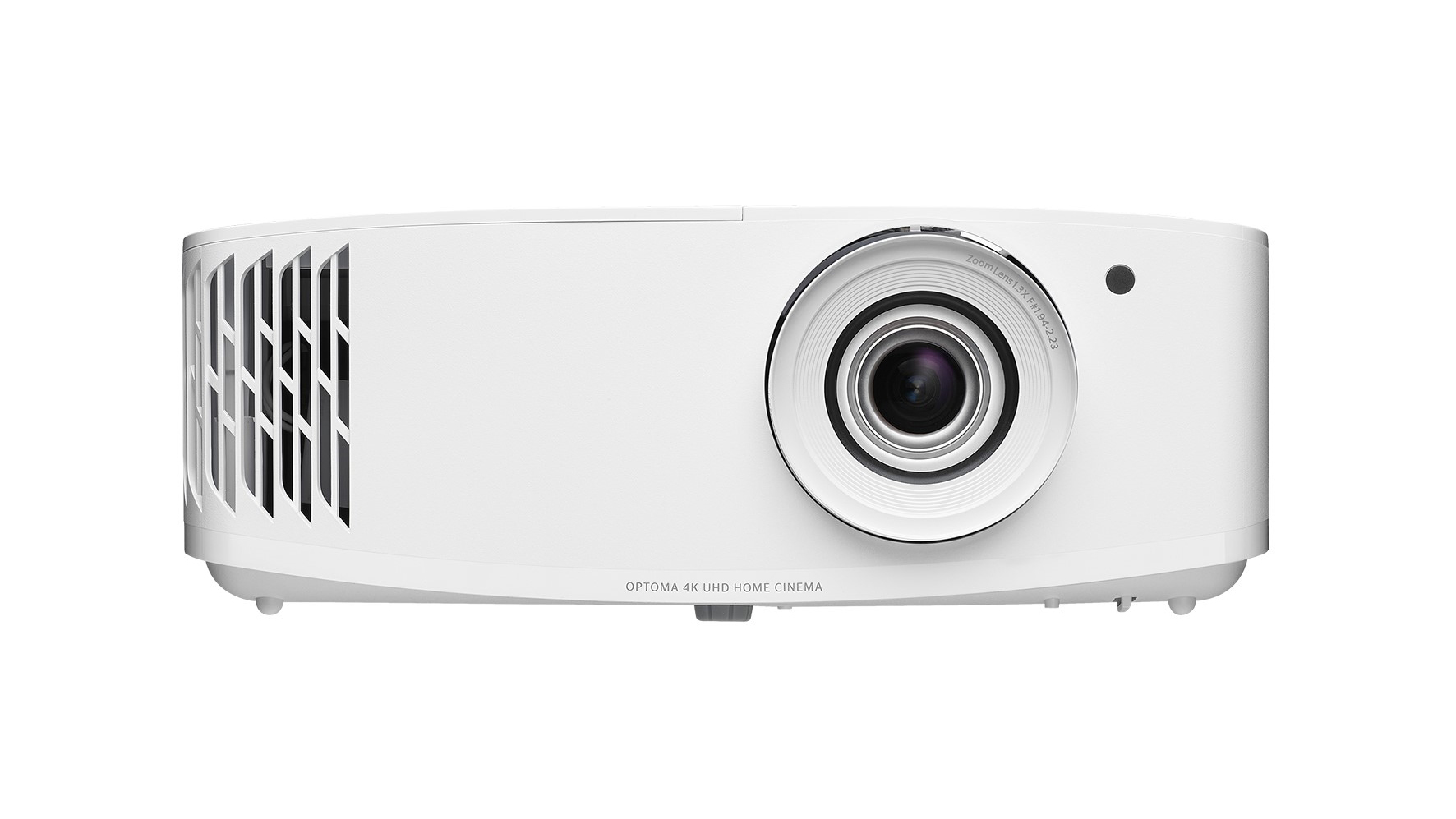
The Optoma UHD42 uses a 0.47in chip, which has a 1080p physical mirror matrix and uses four-phase pixel shifting to quadruple the resolution and create the full 4K, 8.3 million on-screen pixels.
While that’s normal for a projector at this price, it’s worth noting that Optoma has chosen to go with DLP rather than the 3LCD technology preferred by Epson. It’s a light-reflecting approach, rather than a transmissive one, and that allows for some excellent black depth as we watch the opening sequences of Cybertron with Bumblebee on 4K Blu-ray. It’s a level of darkness far beyond what you get with the five-star Epson EH-TW7000 or the pricier, Award-winning Epson EH-7100.
To get that depth, you’ll need to use Optoma’s Dynamic Black setting and that comes with some performance costs. Almost all home projectors will only support the HDR10 and sometimes the HLG HDR standards. That means that they can’t benefit from the frame-by-frame contrast information delivered through Dolby Vision and HDR10+ metadata. HDR10 acts as a guide for the UHD42 for each scene, but it’s not enough for a budget machine such as this to really get the most out of its limited contrast ability.
Optoma’s Dynamic Black image processing helps make up for this by adjusting the brightness parameters in real time. Without it, the picture lacks some punch. The trade-off is that it’s easy to catch the Optoma adjusting the on-screen light levels each time the shot changes. Ultimately, while this isn't ideal, it is a price worth paying.
With this better-informed exposure, we get that bold, brassy feeling that 4K should deliver. The colours of the robots are vivid and the landscape looks natural as they chase the eponymous hero through the forests and out into the rocky terrain under the piercing turquoise sky. The detail is good and sharp, with a little help from the Ultra Detail filter, and little is lost in the bright or dark sections of the picture.
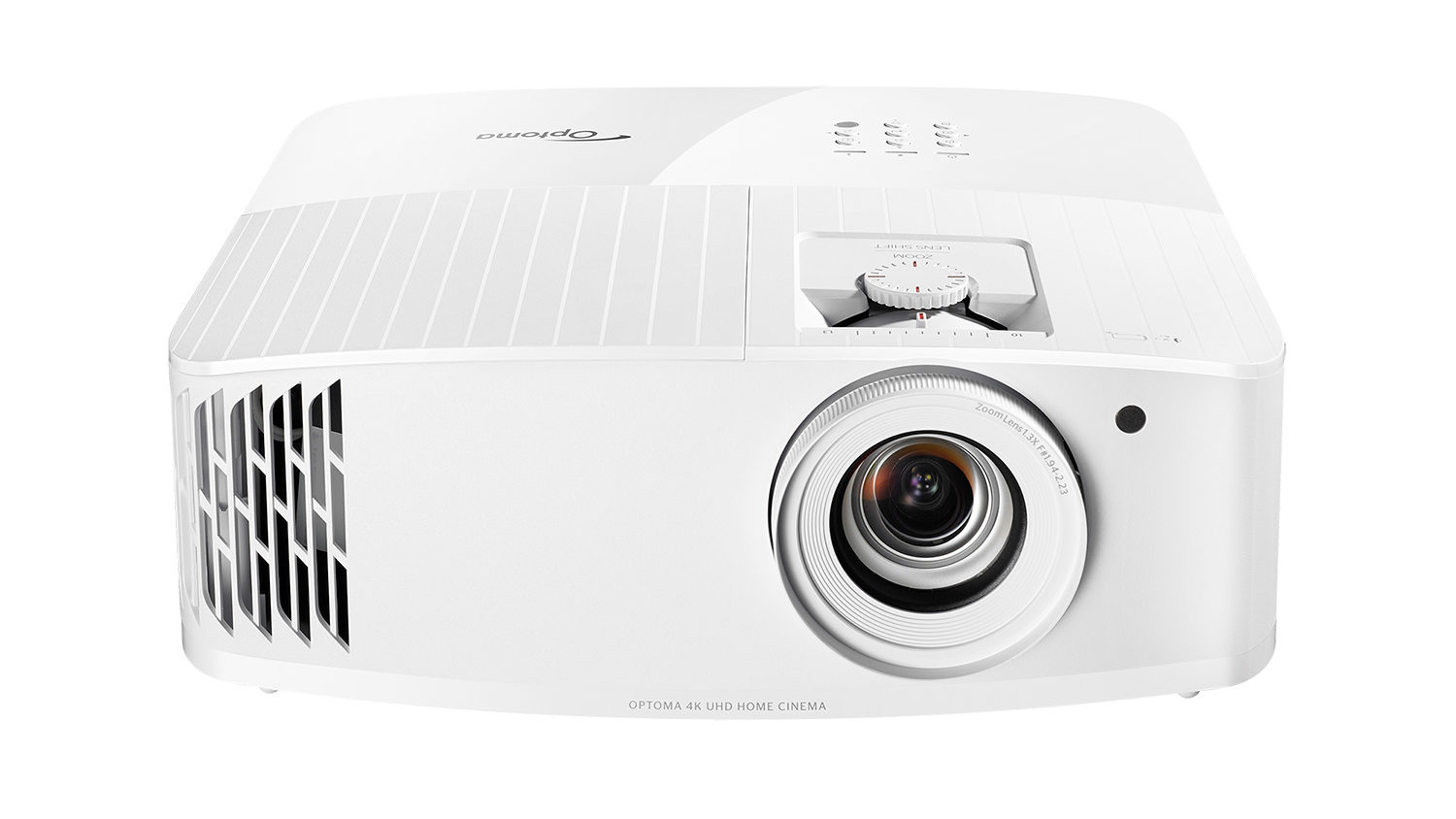
It’s particularly impressive during the burglary scene of Ant-man on Blu-ray. Scott Lang’s all-black outfit shows up brilliantly against the shadowy rear of Hank Pym’s house. His backpack, denim jacket and hoodie are suitably dark against the wooden cladding of the property and during the close-ups, the picture is low-noise and clear.
The UHD42’s shading ability doesn’t quite match its excellent dynamism, though. It can produce deep blacks and bright whites at the same time, but it’s tonally just a little bit blunt. While the Epsons have a more nuanced texture, clouds are a bit soft with the Optoma. Skin tones aren’t as complex as they should be and the result is that the picture is less involving and a touch flat in comparison. That might not be such an issue for gaming, but for watching films we prefer the Epson EH-TW7000.
As with some other budget projectors, the UHD42 is a little juddery for motion. It is most noticeable during camera pans, but is otherwise easily ignored. There’s no motion processing technology to help smooth it out, but frame interpolation is rarely effective at this price point anyway.
If you wish to watch standard-def content, we’d recommend switching Dynamic Black off. Colours are truer without it at this lower resolution as we enjoy John Woo’s 90s classic, Face/Off, on DVD. Otherwise, it’s really rather watchable and quite mind-blowing to see a young Nicolas Cage at his most bonkers.
Verdict
The Optoma UHD42 isn’t an easy machine to calibrate and there’s a balance to be struck to get it looking its best. Nonetheless, this is a capable projector with a feature set that will suit those who wish to use it for both gaming and viewing.
The picture is big and bright with arguably the best black depth in its class and, for some, those attributes may just swing it for the UHD42. But a comparative lack of subtlety in colour and lighting control makes the whole experience actually a little less sophisticated than that of its predecessor.
There’s still plenty of fun to be had and it’s still good value for money, but it isn’t quite the follow-up to the UHD40 that we were hoping for.
SCORES
- Picture 4
- Features 5
- Build 5
MORE:
Read our guide to the best projectors
Read our Epson EH-TW7000 review
Read our Epson EH-TW7100 review
Read our Optoma UHD40 review
What Hi-Fi?, founded in 1976, is the world's leading independent guide to buying and owning hi-fi and home entertainment products. Our comprehensive tests help you buy the very best for your money, with our advice sections giving you step-by-step information on how to get even more from your music and movies. Everything is tested by our dedicated team of in-house reviewers in our custom-built test rooms in London, Reading and Bath. Our coveted five-star rating and Awards are recognised all over the world as the ultimate seal of approval, so you can buy with absolute confidence.
